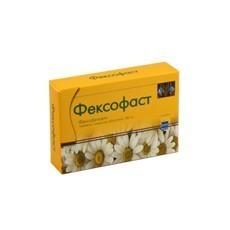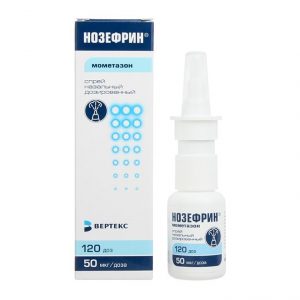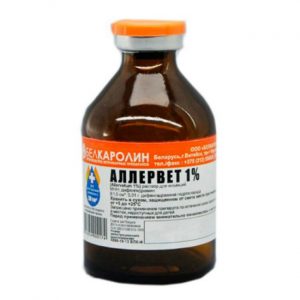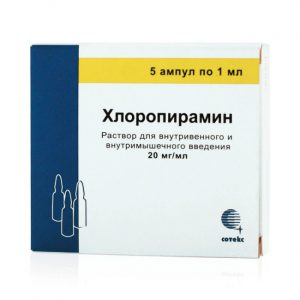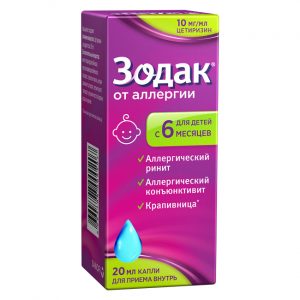Description
Latin name
Fexofast
Release form
Coated tablets.
Packing
10 tablets.
Pharmacological action
Fexofast has an antihistamine, anti-allergic effect. Fexofenadine hydrochloride is a non-sedative blocker of H1 – histamine receptors, is a pharmacologically active metabolite of terfenadine. The antihistamine effect is manifested 1 hour after administration, reaches a maximum after 6 hours and lasts for 24 hours. With repeated use, there is no development of tolerance. It does not have choline – and adrenolytic, sedative effects. Does not cause changes in the function of calcium and potassium channels, QT interval in therapeutic doses.
Pharmacokinetics
After oral administration, it is rapidly absorbed from the gastrointestinal tract, the time after reaching the maximum concentration (TCmax) is 1-3 hours. The average value of the maximum concentration (Cmax) after taking 180 mg is approximately 494 ng / ml, after taking 120 mg – 427 ng / ml. Communication with plasma proteins – 60-70% (mainly with albumin and alpha1-glycoprotein). It does not cross the blood-brain barrier. The elimination half-life (T1 / 2) after repeated administration is 14.4 hours. In patients with moderate (creatinine clearance 41-80 ml / min) and severe (11-40 ml / min) renal failure T1 / 2 increases by 59 and 72%, respectively, in patients on hemodialysis, T1 / 2 increases by 31%. It undergoes (5% of the dose) a partial extrahepatic metabolism. It is excreted mainly (80%) with bile, 11% – by the kidneys unchanged.
Indications
Seasonal allergic rhinitis, chronic idiopathic urticaria.
Contraindications
Hypersensitivity,
pregnancy,
lactation,
childhood (up to 12 years).
Precautions: Chronic renal failure. (The recommended daily dose in such patients is 60 mg once).
Special instructions
When taking Fexofast it is possible to perform work that requires a high concentration of attention and speed of psychomotor reactions (with the exception of people having a non-standard response to drugs). Thus, before starting to perform these works (driving vehicles, controlling machinery), you must first check the individual reaction to the drug.
Composition
1 coated tablet contains:
active substance: fexofenadine 180 mg
excipients: microcrystalline cellulose, starch, lactose, croscarmellose sodium (primellose), povidone, colloidal silicon dioxide, magnesium stearate, purified water.
shell: hydroxypropyl methyl cellulose (hypromellose), propylene glycol, purified talc, titanium dioxide, isopropyl alcohol, methylene chloride, dye, rolled yellow varnish (for tablets 180 mg).
Dosage and Administration Fexofast
is taken orally. Adults and children over 12 years of age with chronic idiopathic urticaria – 180 mg once a day.
Side effects
Headache,
drowsiness,
nausea,
dizziness.
Rarely (less than 1 case per 1000 appointments): feeling tired,
insomnia,
nervousness,
sleep disturbance.
In some cases: skin rash,
urticaria,
itchy skin,
other hypersensitivity reactions (angioedema, shortness of breath).
Drug interaction
When combined with erythromycin or ketoconazole, the concentration of fexofenadine in the plasma increases by 2-3 times. The intake of aluminum – or magnesium-containing antacids 15 minutes before taking fexofenadine leads to a decrease in the bioavailability of the latter (the time interval between their intake should be at least 2 hours). Does not interact with omeprazole, with drugs, metabolized in the liver.
Overdose
Symptoms: dizziness, drowsiness and dry mouth. In case of overdose, it is recommended that standard measures be taken to remove the unabsorbed drug from the gastrointestinal tract. Symptomatic and supportive therapy is recommended. Hemodialysis is ineffective.
Storage Conditions
In a dark place at a temperature not exceeding 25 ° C.
Shelf life
3 years.
Active substance
Fexofenadine
Conditions of drugstore
Without prescription
Dosage form
tablets
Prescription
Prescription
For children over 12 years old For adults
